
How to Market Vegan Products Without Preaching (or Losing Sales)
by Tapam JaswalMarketing vegan products isn’t just about talking to people who already follow a vegan lifestyle. It’s also about connecting with curious people, such as those who want to eat healthier, care about the environment, or simply want to try something new. But the way you talk to them matters. If your message sounds like you’re blaming or judging them, it can push them away.
The best vegan marketing meets people where they are. That means learning what motivates different groups, using friendly and positive language, and selecting the most effective channels to share your message.
Below, we have compiled a list of what doesn’t work, like sounding too preachy, and what does work, based on research, good strategies, and real results.
We’ll walk you through smart, easy-to-use tips to help you connect with more people, build trust, and grow your vegan brand, all without compromising your values or voice.
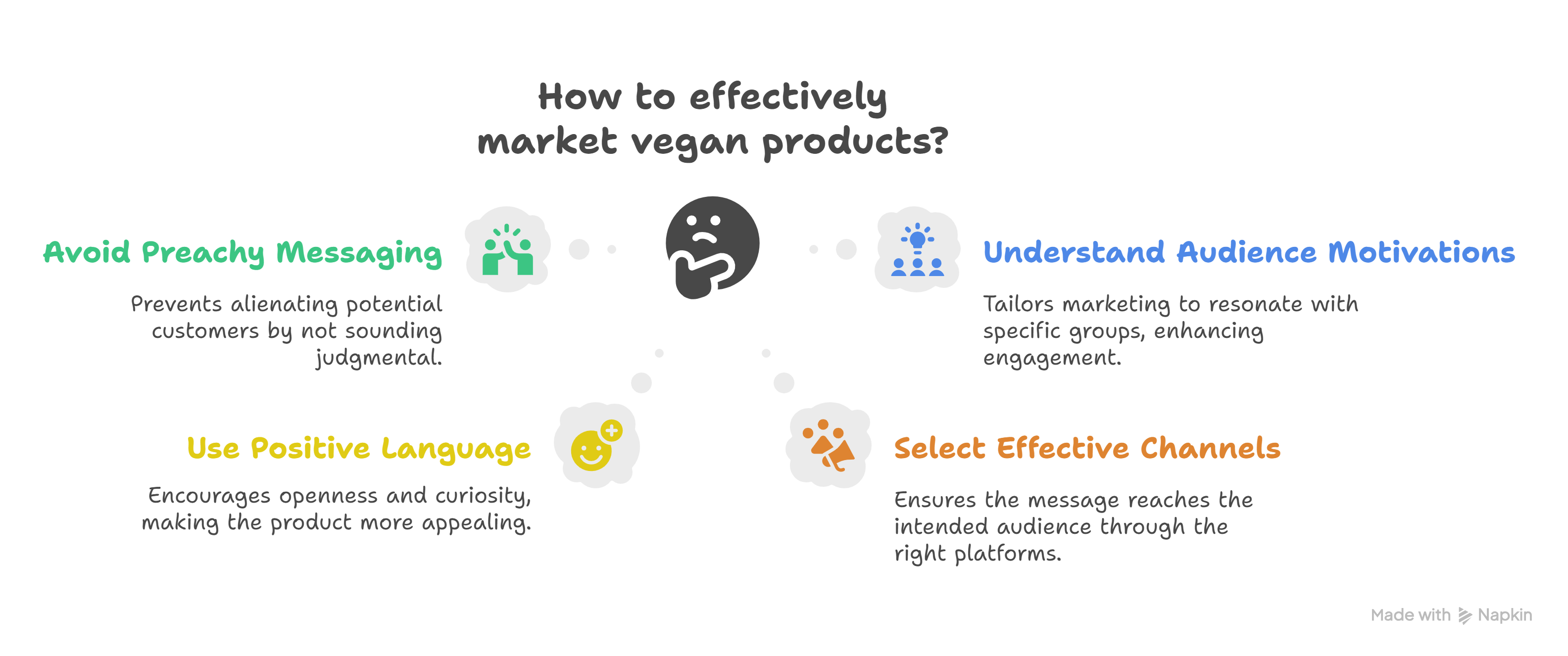
Why “Preachy” Marketing Might Backfire
- According to a 2023 Food Industry Association (FMI) report, 72% of consumers say they appreciate plant-based options, but prefer messages that feel inviting rather than judgmental [source].
Consumer research consistently highlights that preachy, guilt-based vegan messaging can trigger resistance and undermine good intentions:
- Only 5% of U.S. consumers identify as vegan or vegetarian, yet nearly 42% now consider themselves flexitarian, people who are open to plant-based options but are turned off by judgmental or rigid messaging [source].
- Labels explicitly marked as “vegan” can psychologically alienate mainstream shoppers by triggering identity resistance: “this product isn’t for me.”
- Negative stereotypes like “preachy,” “militant,” or “pretentious” are often associated with veganism, further discouraging trial among omnivores.
In short, what sounds like a values-driven campaign to one group may feel like a guilt trip to another. If the message makes consumers feel judged rather than inspired, even a high-quality product may be ignored.
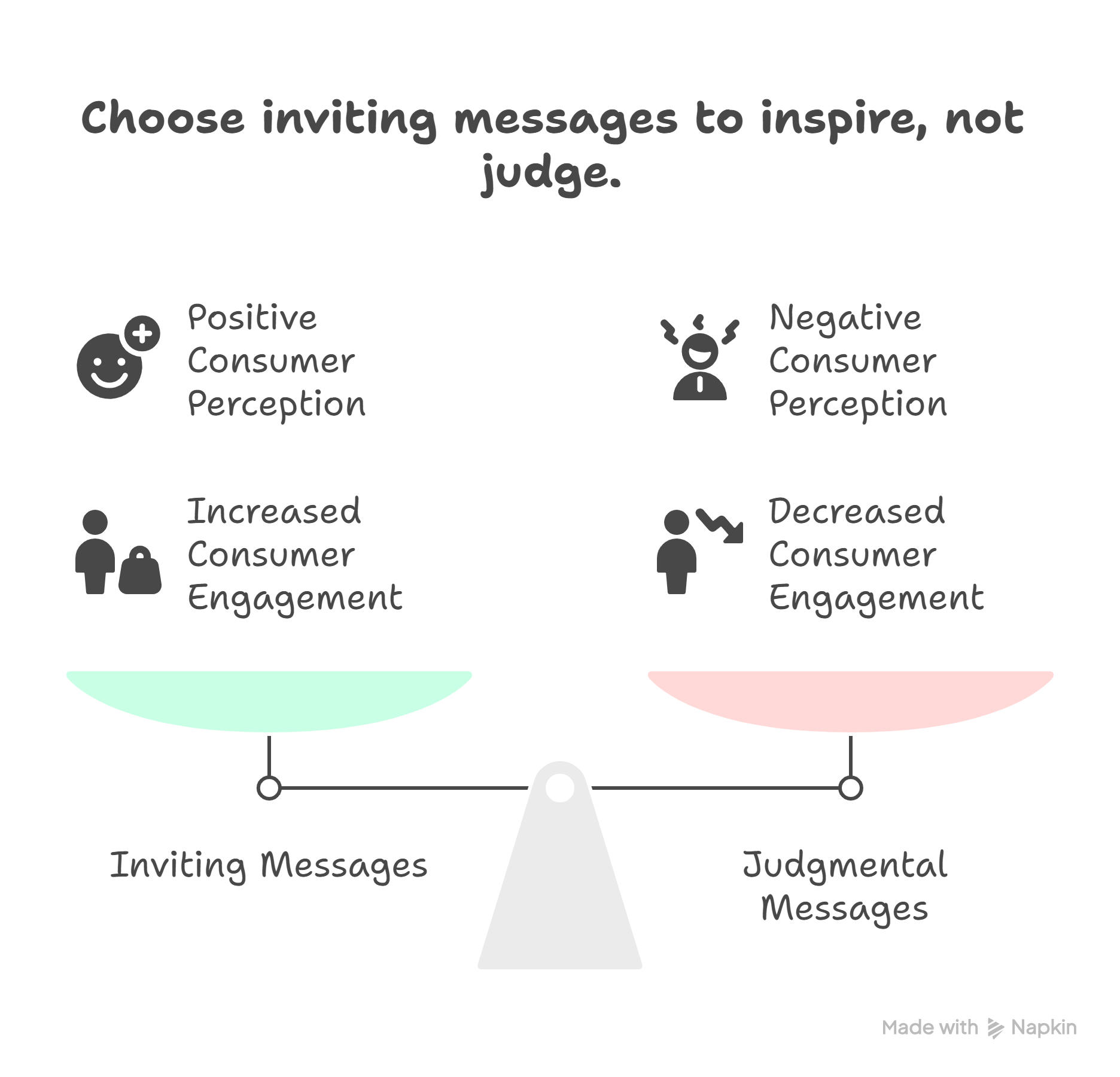
Understanding Your Audience and Their Motivations
Identify Key Demographics
Understanding who is most likely to buy your products is foundational. Vegan or not, are they:
- Health-conscious millennials?
- Climate-conscious parents?
- Gen Z snackers who care about animal welfare?
Mapping buyer personas helps prioritize which benefits to emphasize in your messaging.
Understand Motivations
Beyond core vegan reasons, consider specific values driving different segments:
- Health benefits (e.g., heart-friendly, high in fiber/protein)
- Sustainability (e.g., lower carbon footprint, reduced water use)
- Ethics (e.g., animal cruelty-free, fair trade sourcing)
Many consumers are motivated by a combination of these. Messaging that reflects this layered decision-making tends to outperform one-note value claims.
Craft Targeted Messaging
A one-size-fits-all approach doesn’t work. Tailor your communication:
- For fitness-focused audiences, highlight performance and nutrition.
- For sustainability-conscious shoppers, emphasize planetary impact.
- For values-led shoppers, share transparent supply chain stories.
For a deeper dive into value-based messaging strategies, see our guide on purpose-driven branding and purpose-driven content marketing.
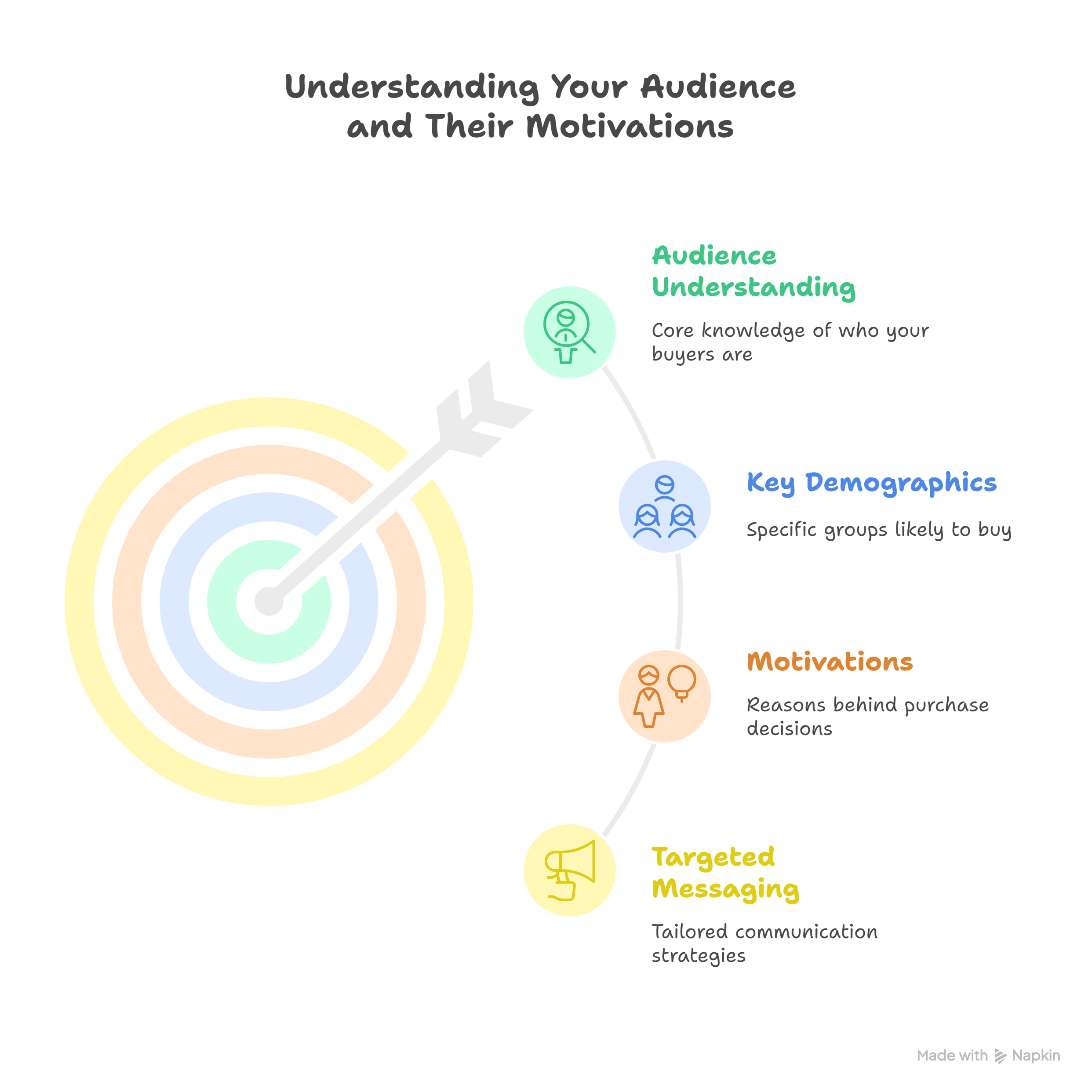
Proven Strategies for Vegan Marketing That Connect
1. Lead with Taste and Enjoyment
- According to an MDPI study, taste is the number one factor influencing plant-based purchases for 74% of flexitarian consumers, above sustainability or health [source].
Taste remains the primary driver for food and beverage purchases, even among ethically motivated consumers:
- Using indulgent terms like “rich,” “savory,” or “juicy” boosts product appeal significantly. Demand for flavor-first messaging has outpaced overt “vegan” labeling in consumer tests.
- Brands succeeding in mainstream markets (such as Impossible Foods or Beyond Meat) emphasize familiarity, indulgence, and satisfaction.
Actionable Tip:
- Focus messaging on flavor: “Juicy, flame-grilled flavor, 100% plant-based“
- Use mouthwatering visuals and avoid over-indexing on health or sustainability.
2. Content Marketing and Education
According to research by the Plant Based Foods Association (PBFA), 76% of shoppers believe transparency around ingredients and production methods is important, and 74% of consumers trust products more if they carry a certified plant-based seal. [source].
Content is an education and trust-building tool. Use it to:
- Develop blog posts, recipes, and videos showing how easy and delicious it is to cook with your products.
- Share myth-busting articles on protein sources, nutrition balance, or cost-effectiveness.
- Emphasize transparency, ethical sourcing, and carbon footprint reduction in behind-the-scenes content.
Pro tip: Add user-generated content and testimonials to increase relatability and trust.
(To learn more about writing persuasive and ethical product descriptions, check out this guide to high-converting sustainable product descriptions.)
Looking to turn content into a conversion engine for your vegan product line? Our Organic Search and Email Marketing services can help you scale content visibility and drive real engagement.
3. Digital Marketing Strategies
According to recent CPG consumer trend data, products labeled “meatless” saw up to 16% higher demand than those labeled “vegan.” Brands are increasingly shifting toward inclusive, functional descriptions to broaden appeal.
Meanwhile, influencer marketing, particularly casual, recipe-driven content on TikTok and Instagram, has been shown to significantly boost engagement and trial for vegan products, especially among Gen Z and flexitarian shoppers. [source]
Here’s how to go beyond social posts:
- Social Media: Platforms like Instagram, TikTok, and Pinterest are ideal for storytelling, product demos, and community building.
- Influencer Marketing: Partner with vegan and non-vegan influencers who align with your brand tone and values.
- SEO & Blog Strategy: Target search terms like “plant-based snacks” or “easy vegan dinner ideas.”
- Google Ads & Meta Ads: Use paid media to reach health-conscious and sustainability-interested segments with tailored offers.
- Email Marketing: Build loyalty with regular newsletters, recipe drops, and community updates.
- Conversion-Optimized Website: Ensure fast loading speed, great UX, and strong calls-to-action.
Looking to improve visibility, drive traffic, and convert more conscious consumers? Explore our Paid Search and Organic Search services designed for purpose-led brands.
A 2024 study from the USC Schaeffer Center found that Americans are significantly more likely to choose vegan food when it’s labeled as “healthy” and “sustainable” rather than simply “vegan.” This reinforces the power of language in influencing trials, especially among flexitarian or health-conscious shoppers.
4. Visual Appeal and Taste
In a study by The Good Food Institute, 81% of flexitarian consumers said images of dishes that “look indulgent and comforting” made them more likely to try a plant-based version, even if they weren’t actively seeking one [source].
A major barrier to trial is the assumption that vegan products “won’t taste as good”. Visual storytelling can change that:
- Use vibrant, mouthwatering imagery.
- Show the product in real-life usage: on a BBQ, at a dinner table, in a smoothie bowl.
- Feature people enjoying your product, not just still-life packaging.
Also, focus on nostalgia and comfort. If your product replicates a classic, call that out: “Plant-based mac n’ cheese like mom used to make.”
Need help bringing your visual story to life on Shopify? Our Shopify development team can help create high-converting, visually immersive online stores tailored for sustainable and plant-based brands.
(Also see how sustainable brands are using Instagram effectively to showcase visual storytelling and product aesthetics.)
5. Building a Community
Community is one of the most powerful tools in values-led marketing:
- Engage constantly: Reply to comments, answer DMs, and reshare customer content.
- Encourage UGC: Incentivize followers to share their recipes, reviews, or lifestyle photos.
- Host Events: Consider digital tastings, community challenges, or in-store sampling.
Strong communities turn customers into advocates and reduce the need for hard selling.
(For community-building through email and beyond, visit our email marketing service page.)
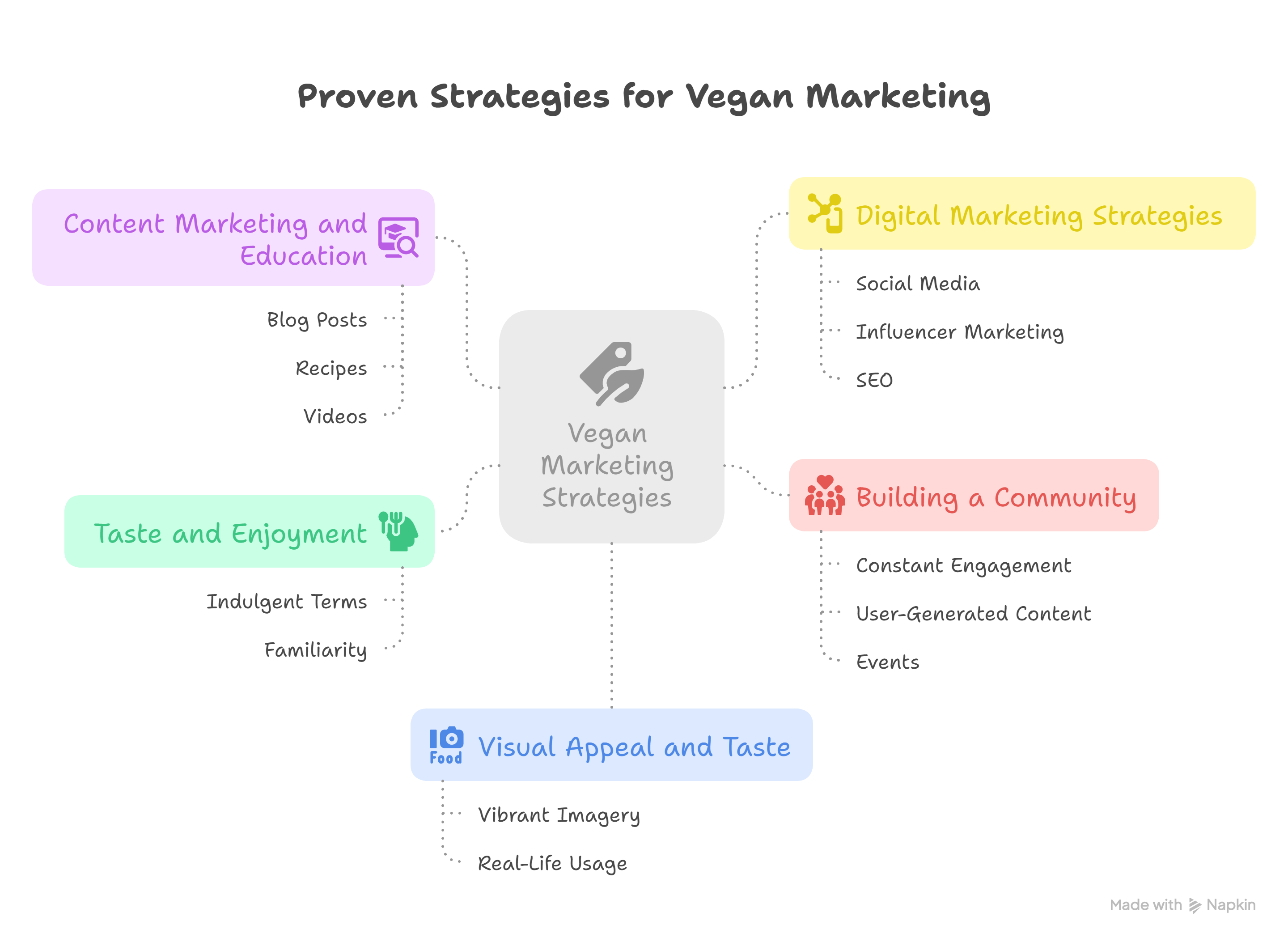
Brands Getting It Right (and Wrong)
✅ Success Stories
- VFC (Vegan Fried Chicken): A UK-based brand that turned internet hate into humor with its bold “Would You Rather” billboard campaign. One ad featured the quote, “I’d rather stick a wasp up my bum than eat VFC,” next to a photo of vegan chicken. The campaign gained attention across social media and was praised by outlets like Marketing Beat. It’s a perfect example of confidence, wit, and product-led storytelling, without preaching.
- Veganuary: A global movement making plant-based living feel exciting and social rather than restrictive.
- Impossible Foods x Burger King: Focused on taste, price, and accessibility, not ideology.
- Stella McCartney: A fashion-forward, animal-free brand that wins on innovation and luxury, not guilt or shame.
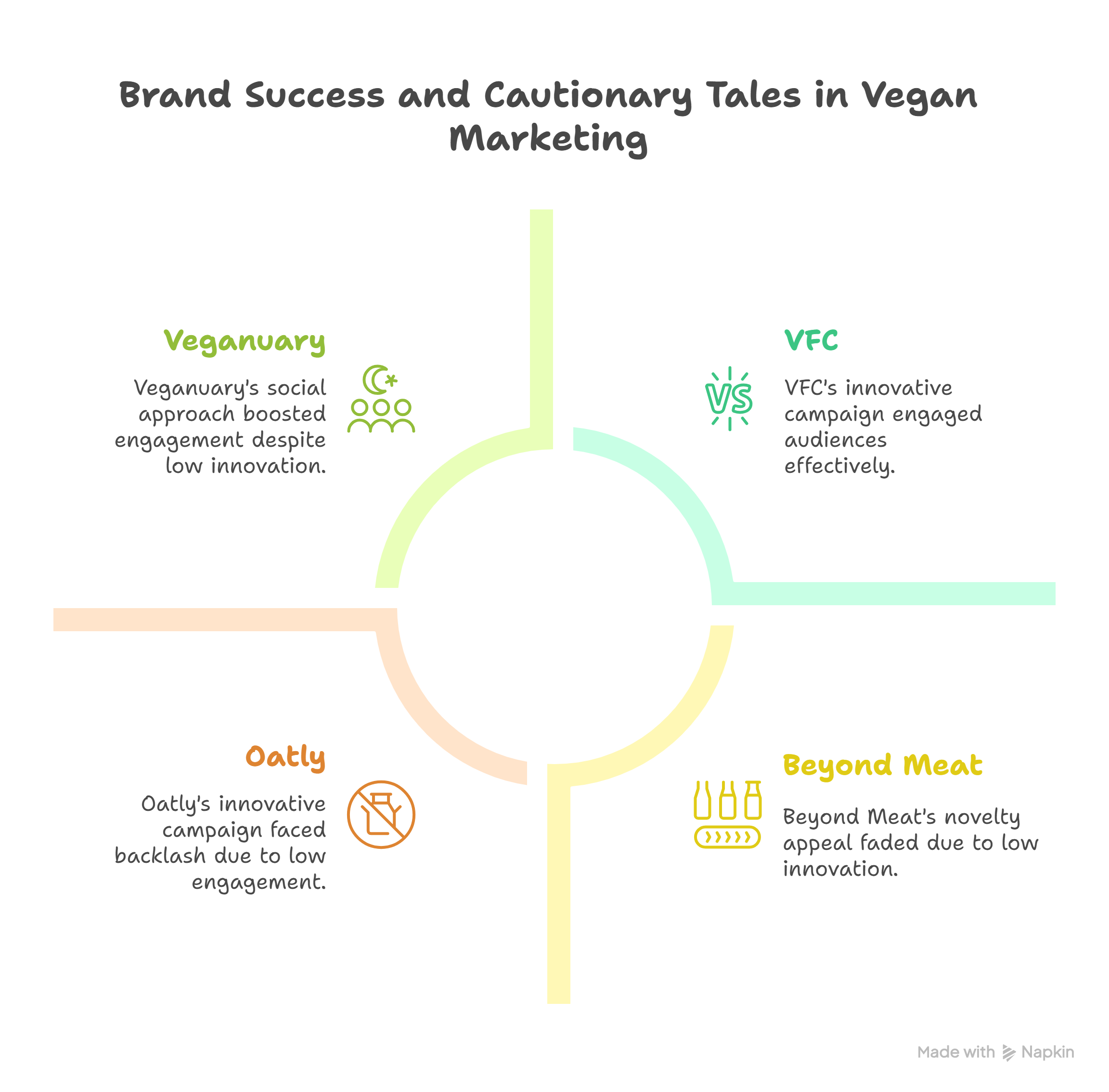
🚫 Cautionary Tales
- Beyond Meat: Lost momentum by relying too heavily on novelty and ethical cues without evolving its appeal.
- Oatly’s “Milk, but made for humans” campaign: Brilliant in reach, but its confrontational tone sparked backlash among dairy drinkers.
Key Takeaways
Here’s a quick summary of the most important insights from this guide:
- Know your audience. Flexitarians and conscious consumers are the biggest opportunity, not just vegans.
- Avoid moralizing. Guilt-based messaging can push away potential buyers.
- Lead with taste. Flavor, familiarity, and indulgence win over more shoppers than health or ethics alone.
- Use clear, inclusive language. “Plant-based” and “meatless” are more effective than “vegan.”
- Invest in great content. Educational blogs, recipes, and storytelling build trust and long-term value.
- Show, don’t preach. Visuals of happy, relatable people enjoying your products work wonders.
- Build a community. Your biggest advocates are customers who feel like part of your mission.
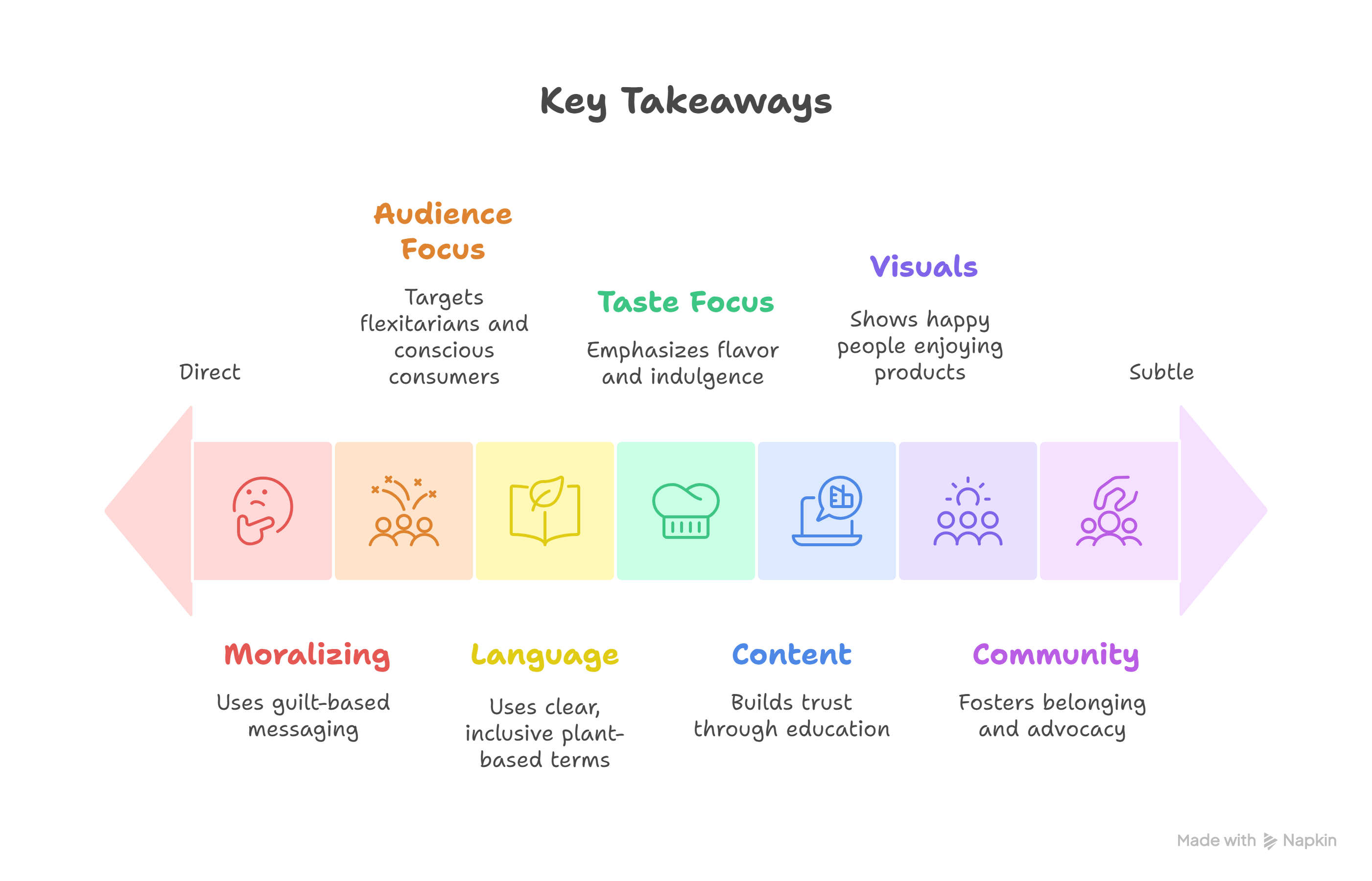
Explore Further: Smart Strategies for Vegan Brands
If this guide helped you rethink your messaging, these deep-dive resources will take your strategy further:
- 📈 Top Vegan Digital Marketing Strategies for Ethical Brands: Get a strategic overview of campaign planning, targeting, and creative direction tailored for vegan and sustainable DTC brands.
- 🔍 The Vegan SEO Guide: Learn how to rank your plant-based brand without relying on pushy or preachy keywords. Perfect for Shopify and content teams alike.
These reads build on what you’ve learned here and give you more tactical ways to grow your vegan brand without losing your voice.
- If you’re looking for tailored support with your vegan brand’s growth strategy, explore our Organic Search, Paid Search, or Email Marketing services.
- Running a Shopify-based store? Learn more about how we optimize vegan and sustainable e-commerce experiences on our Shopify page.
- Want to discuss your brand’s challenges or marketing goals? Get in touch with us for a free 30-minute strategy call.
By implementing these strategies effectively, your vegan products can win over curious consumers, build brand loyalty, and drive growth, all while staying true to your mission.
Purpose-led marketing doesn’t need to preach. It needs to invite, inspire, and include.
- About the Author
- Latest Posts
I’m a part of CueForGood’s SEO team. I love watching Football and Anime.
-
How to Market Vegan Products Without Preaching (or Losing Sales)
by Tapam JaswalMarketing vegan products isn’t just about talking to people who already follow a vegan lifestyle. It’s also about connecting with …
Continue reading “How to Market Vegan Products Without Preaching (or Losing Sales)”
-
Vegan SEO: Optimizing Organic Visibility for Purpose-Driven Brands
by Tapam Jaswal
More people than ever are interested in vegan products and services. If you run a vegan brand, ensuring customers can …
Continue reading “Vegan SEO: Optimizing Organic Visibility for Purpose-Driven Brands”
-
Google AI Mode Explained: How It’s Reshaping Search and Content with Real Examples & Tips
by Tapam Jaswal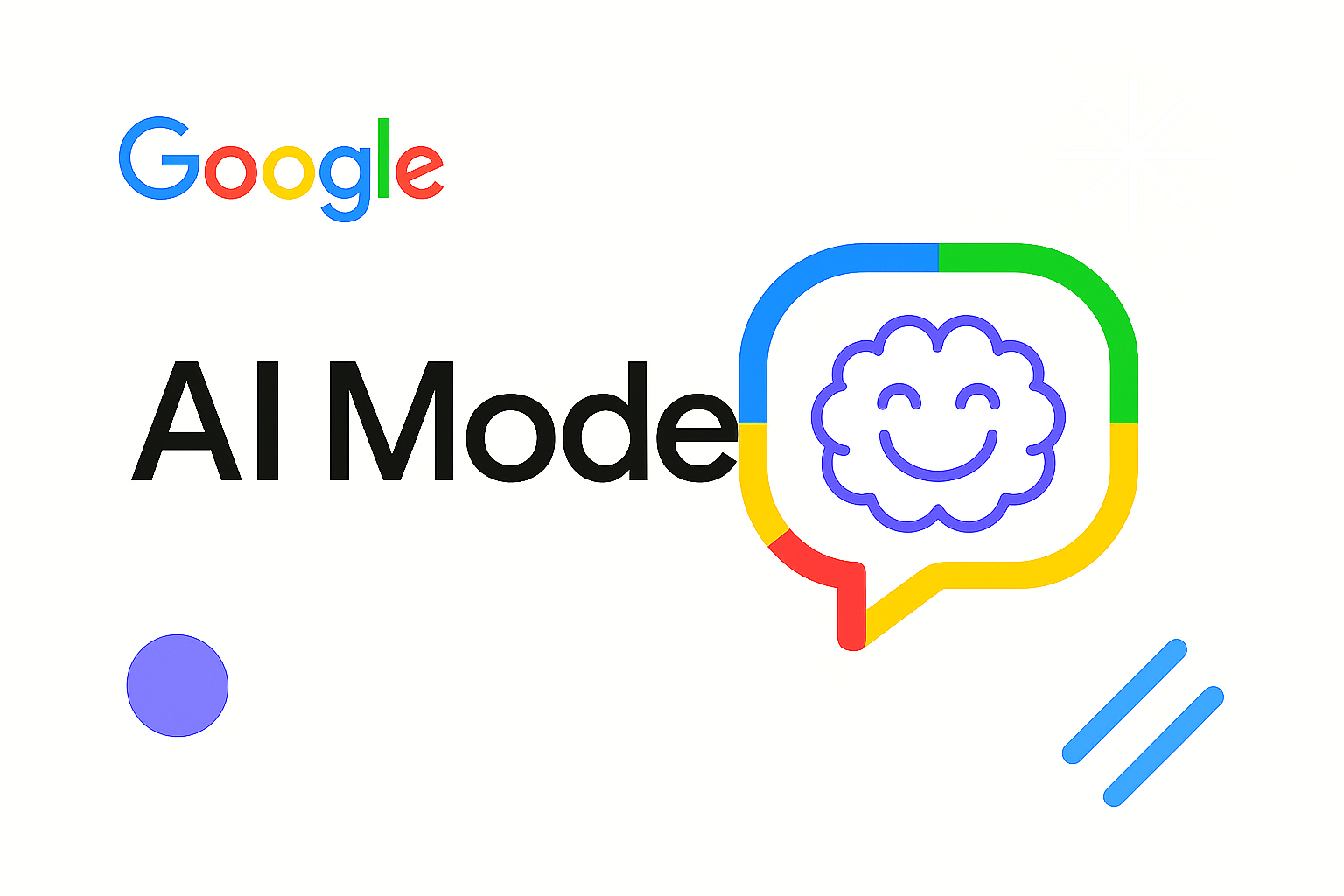
If you’re in SEO or content and have been watching Google’s changes, you already know: AI Mode isn’t a minor …
-
Jiva’s Organic Traffic Growth: 354% Surge in 6 Months | CueForGood
by Nida DanishSummary: Jiva’s efforts to empower smallholder farmers weren’t gaining the digital traction they deserved. With a strategic overhaul led by …
Continue reading “Jiva’s Organic Traffic Growth: 354% Surge in 6 Months | CueForGood”
-
What We Learned When We Switched From Disposable Tissues to Reusable Napkins
by Nida DanishAt CueForGood (CFG), we’ve embraced a refreshing change: reusable cloth napkins. While the switch may seem minor, it’s rooted in …
Continue reading “What We Learned When We Switched From Disposable Tissues to Reusable Napkins”
-
Of Light, Laughter & Transformation: Diwali 2024 at Cue For Good
by Nida Danish
On any given day, walking into the Cue For Good office feels like stepping into a space with heart. It’s …
Continue reading “Of Light, Laughter & Transformation: Diwali 2024 at Cue For Good”





